JANUARY
recently I've been very interested in the instagram account @photocinematica - an instagram account dedicated to reposting photographers work that has cinematic qualities. In particular I was interested in the understanding of composition and I noticed many posts were shot with one point perspective in mind and contained really interesting and dynamic compositions.
This started me thinking on my Unity corridor again as I had left it on the back burner for a while due to essay time taking over the last month.




The AA hosted a symposium on film, space and architecture organised by Brian Hatton. Hatton discusses why architects should study movies and how this concept came around in the seventies due to technical innovation such as the VHS.
Ian Christie discusses film studies and how it focusses very little on production design. He claims very little has been written on the art design of film and that’s where his studies began. He claims that what film does is create imaginary spaces and we are not encouraged to analyse this deeply as an audience. They are synthetic spaces made up of found reality, constructed reality and the world we live in. We are everywhere and nowhere when we watch these films. He discusses how directors and production designers take composition from one another and there’s a sense of reproduction at hand. Like a homage to one another.
He then goes on to discuss Metropolis 1926 and how it is so rich in information as it is the pioneer of sci-fi and has been revisited by designers time and time again. It was originally laughed off the screen and forgotten about and only gained traction post WWII. In many respects it was not aimed at the audiences of 1926 and its time came later. It stands as a beacon of modernist design and it is an art department piece of work. This began the recognition that film needs an overall design direction.
Tarkovsky’s Solaris (1972) is a film so rich in design and he discusses how we give too much power to directors and how the art department is so vital to a films success in creating an extraordinary environment. The film itself is a window into the late soviets perception of a space station. Idealised vision of life in space paired with an idealised vision of life on earth.
I've been a fan of science-fiction from a very young age and have grown to love the design aspects of these films in particular. One of these iconic designs being science-fiction corridors. I would sit and redraw Ron Cobb and Syd Mead's production sketches and fell in love with the retro-futuristic design elements. Chunky awkward shapes and a bunch of thrown together spare parts resonated with name in some way
I wanted to shift my idea into a more abstract format. A less literal corridor and more a space that creates length and depth creating a never ending corridor loop.
Corridors are a great way to sell a sci-fi story and make it believable. It gives a feeling of endlessness and vast space. They're so utilitarian in nature and when cut down to basics act as a conduit to get from one set to another. When the production designer is smart enough to realise the corridors are the foundation of a much larger set, then you receive a rich reward.
Roger Christain's take on Ron Cobb's corridor concept art in Alien are focused on near the beginning of the movie. The viewer is met with shots of just these spaces in solitude

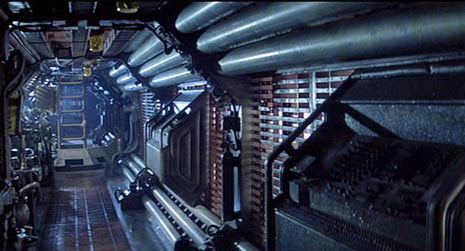
Ridley Scott understands corridors impact in horror films and uses them wisely throughout the film. These corridors are not the generic space corridor that tend to be clinically white and smooth. They are grimy and gritty, industrial in design again selling the fantasy.
There is layers to the corridors of Alien and different decks of the ship give different feels to the film. The corridor leading to the "hyper-sleep quarters" are sleek and "modern" yet there is still this immense creepiness to them.
Alien started the kind of corridor-fetishism in screen sci-fi that Kubrick had failed to start with 2001: A Space Odyssey, since the latter film was so visionary and expensive that practically no-one could even attempt to imitate it.
Arrived near Jupiter, Dave Bowman leaves Discovery One. He observes this gigantic black monolith orbiting the gas giant and finds himself embarked on a colourful, psychedelic, strange and… cubic high-speed journey. Jupiter and Beyond the Blocks is a machine remake of the legendary 2001 movie A Space Odyssey made using Minecraft.
Above translated from here.



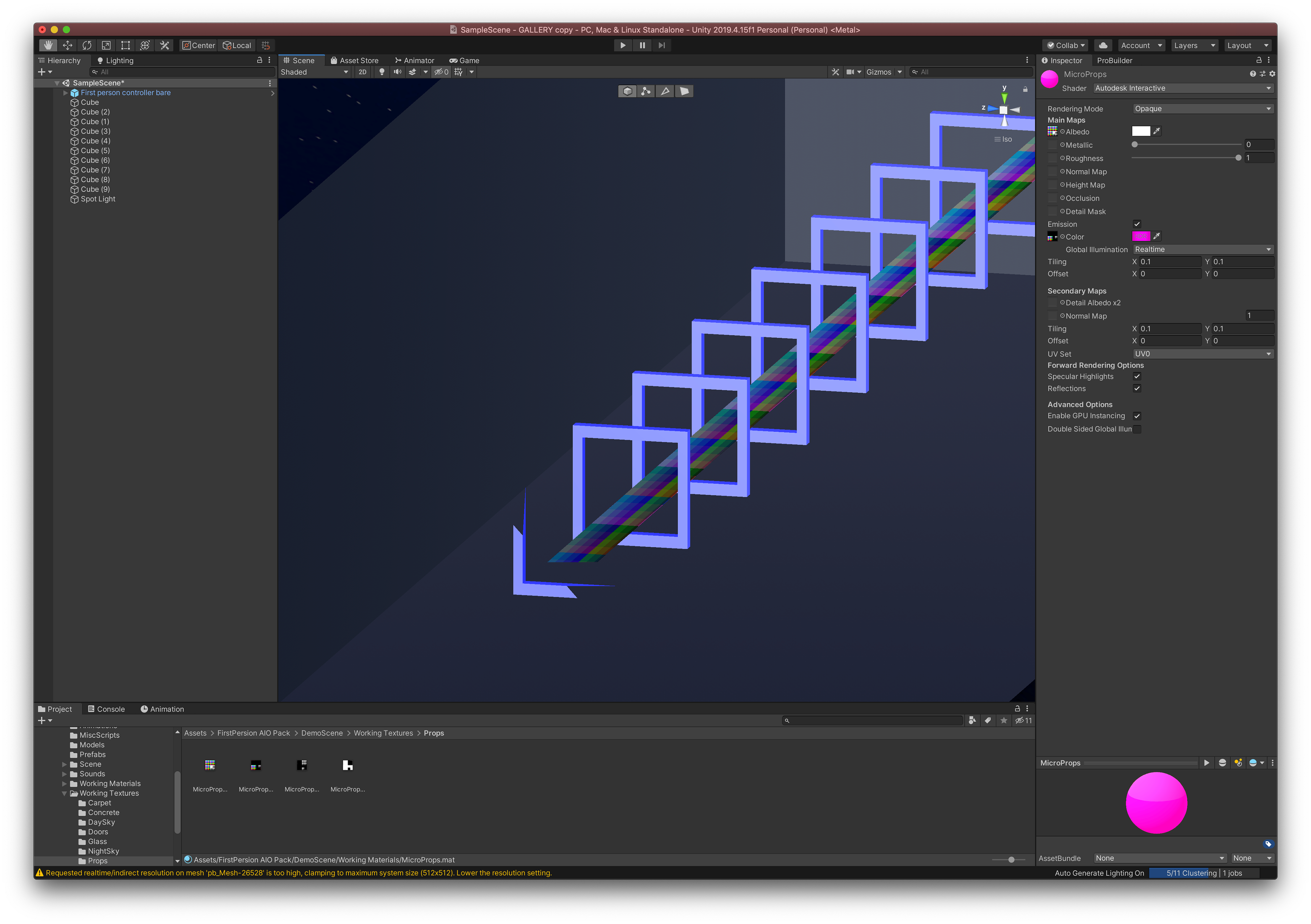
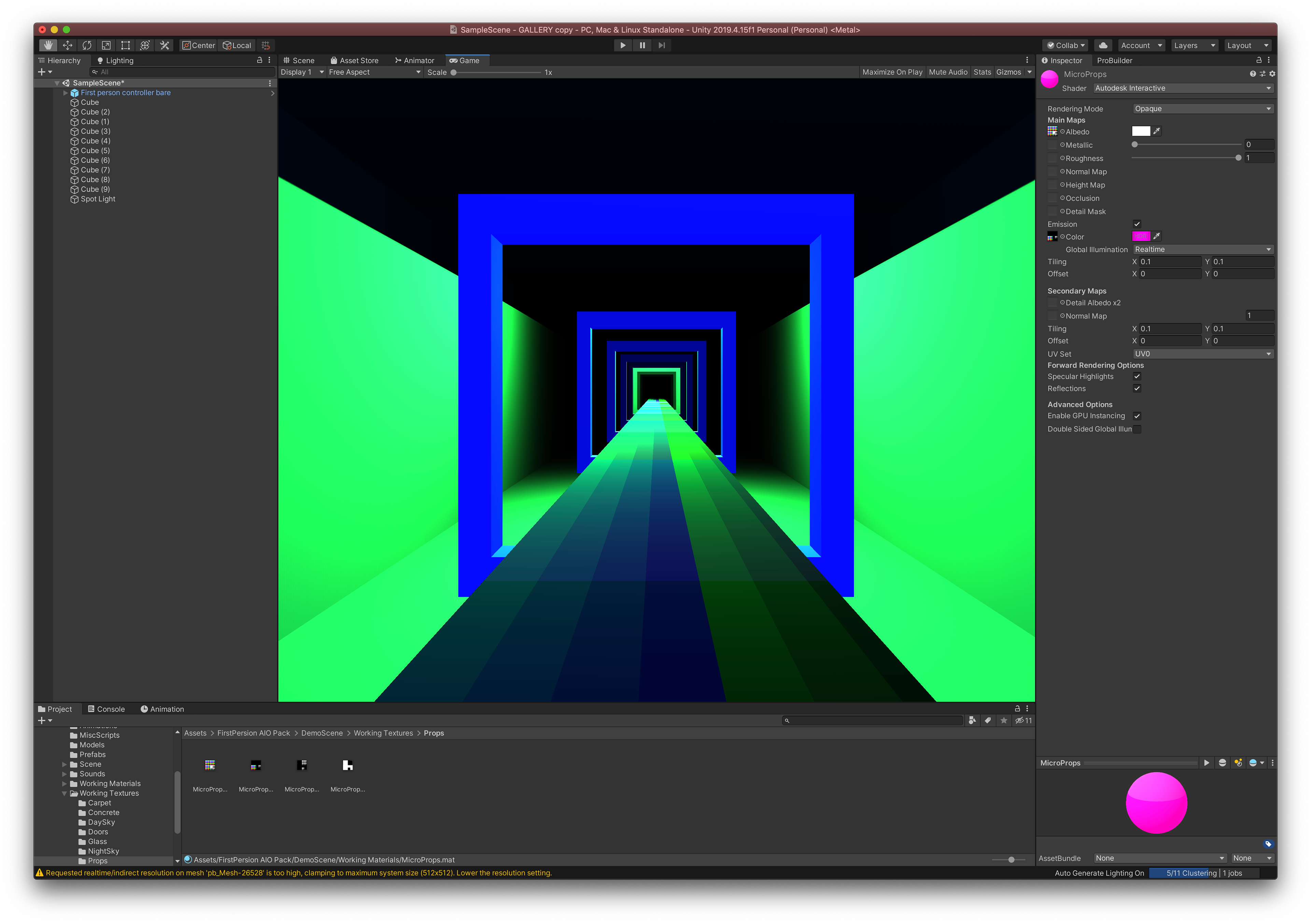
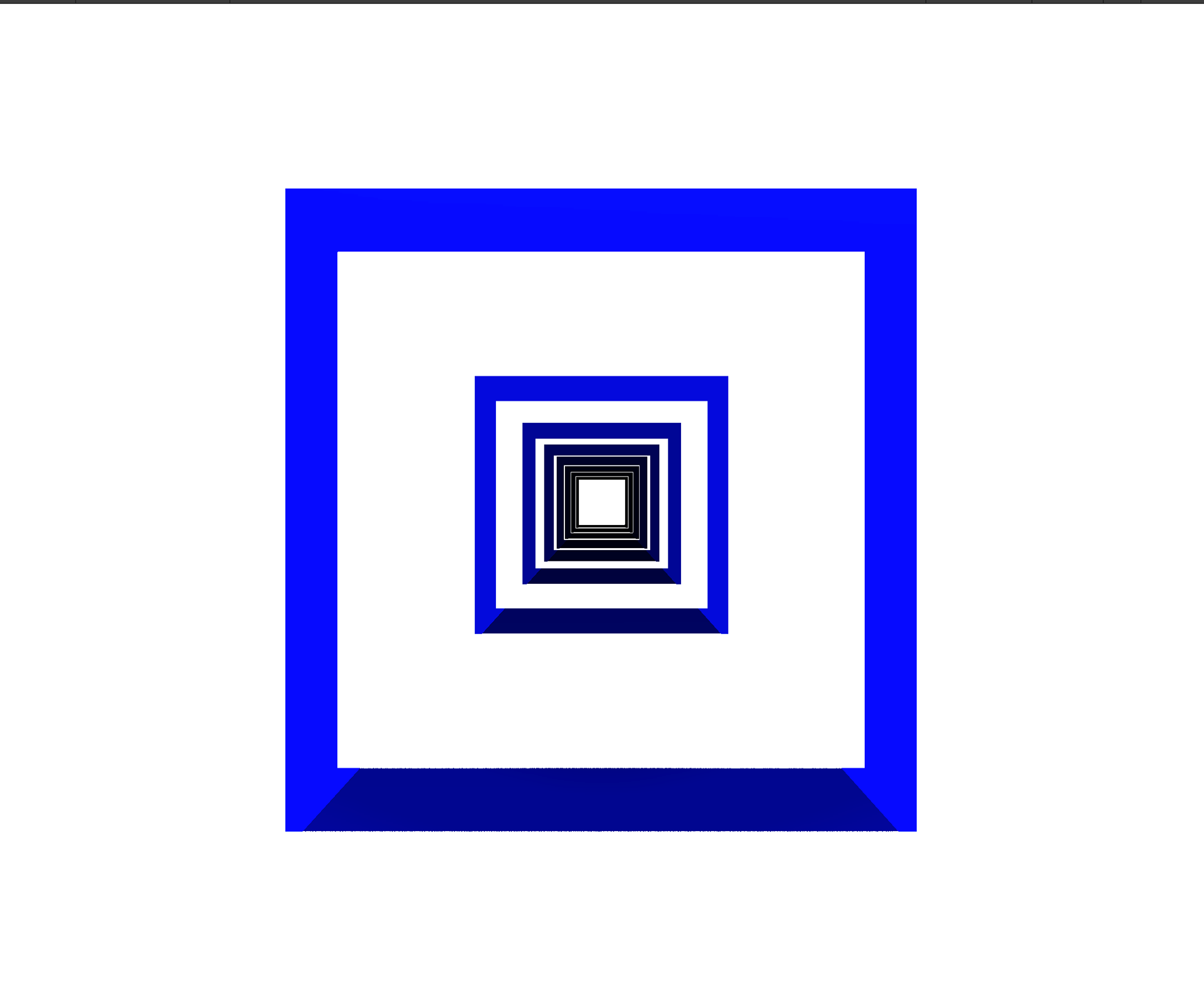
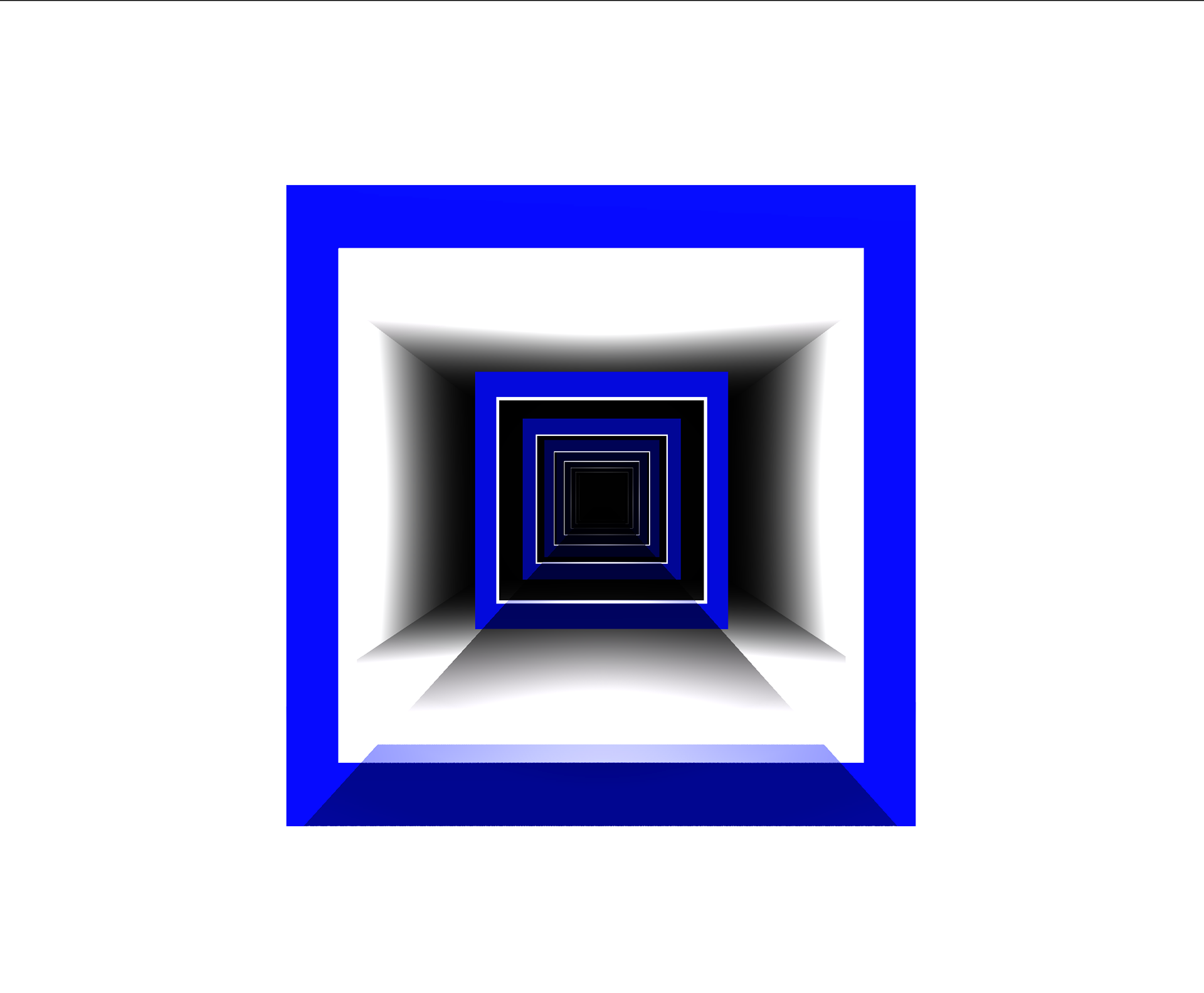
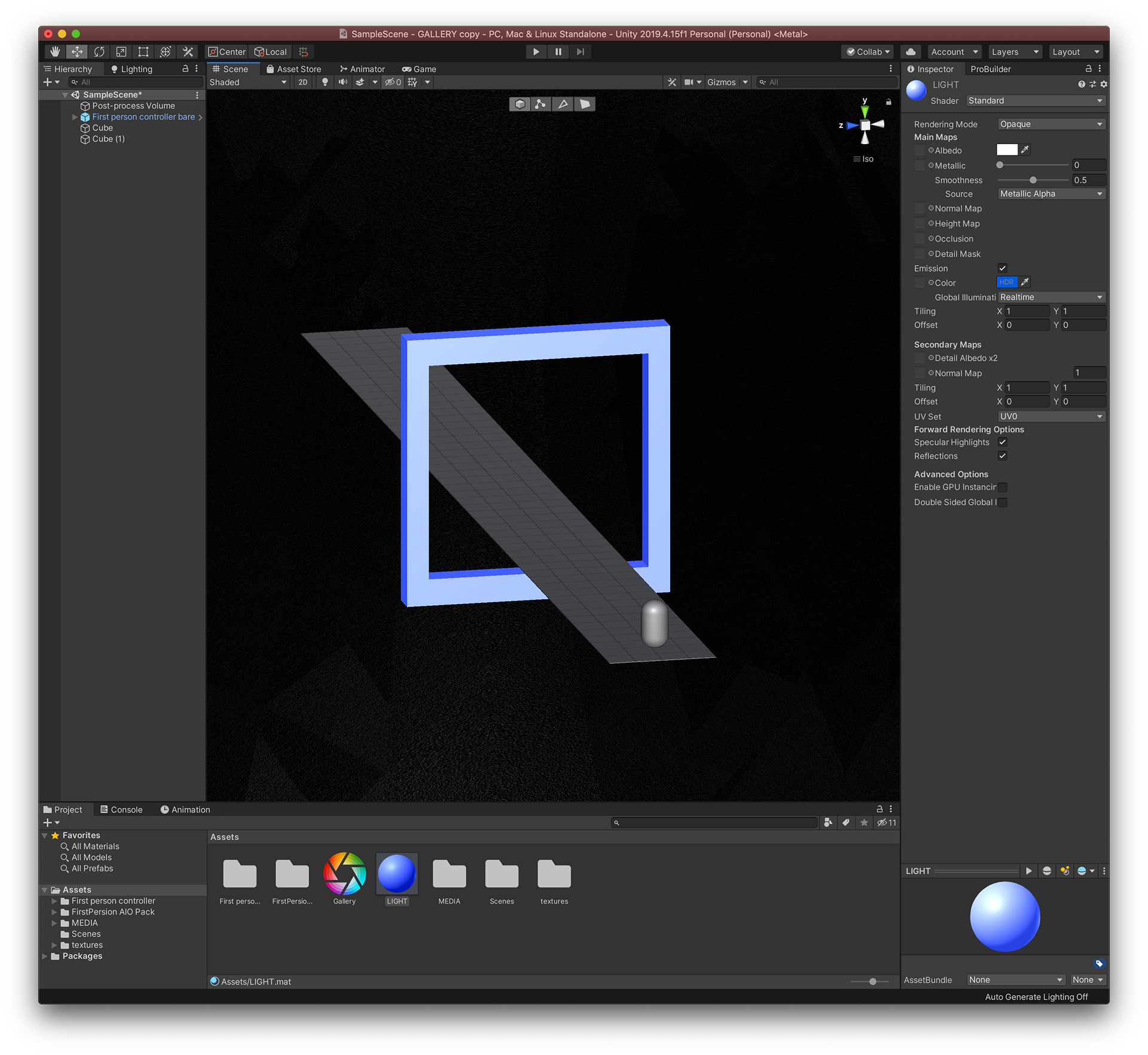
I was looking for a more abstract setting that I could manipulate into looking reminiscent of many famous sci- fi corridors rather than just the one look. These were very Tron like and maybe a bit too 'retro' for my liking but I enjoyed experimenting with emissive materials and animating them.
The bold shapes were also interesting and I imagined these as huge projections in a dark space. Thinking about and all encompassing experience that could maybe react to sound? This was straying from what I wanted to achieve but an interesting output in the future perhaps.
VIDEO BELOW CONTAINS FLASHING IMAGES
Serafin Alvarez's work Maze Walkthrough which you can download here is a remarkable amalgamation of iconic science fiction corridors. It's an exercise on speculation of the imaginary. Alvarez has been collecting noteworthy sci-fi corridors over the course of three years (you can view his site here) and below is a 3D reproduction of these familiar hallways in a maze like setting. In a video game like format it allows the user to explore these spaces. It features corridors from 2001: A Space Odyssey, Alien, Brazil, Star Trek and many other well known settings.
Passage and travel are important in science fiction, since most works in this genre derive their plot suspense from some experience of alienation, exodus, or voyage. In the mainstream imagination, science fiction is seen as a kind of speculation with possible meaning, an aspiration that necessitates technical advancement.
This advancement has eventually been an underlying factor in fantasy, of what we unfailingly expect will happen tomorrow. This sensation is mirrored in science fiction, most notably in the incredible technological evolution in modes of transportation. The means of travel go beyond the physical constraints of our world and our organic dependence.
Considering ourselves out with our realities we can embed ourselves in these kind of creations and allow ourselves to become the camera or the protagonist inhabiting these zones.
These areas are the home to some of science fictions most iconic and suspenseful themes.
The corridors in question function as a metaphor of the in-between, of connection and of transportation. They serve their purpose as a portal and it is vital to the films narrative and our vision of inhabiting these dimensions. It takes us on a journey between physical reality and fictional reality. These spaces go unnoticed and hide in plain sight due to their nature.
Changing to area lights to create these glowing panels in unity gave a much more futuristic feel and separated the experience from an average corridor like my previous build. Although I liked that initial concept it was much closer to The Shining in composition which is very interesting but not quite where my research was leading me.
By using an emissive grid effect material and shader (shader from asset store) I was able to enhance the depth of the scene and add a little more to the composition as I felt the lights were too little information for the viewer.
Creating these endless expanses is important to the spaces themselves. My entire thinking behind this piece is to create this space that has no end. The voyage is constant and there is time for reflection of these expanses.
This simulated space to me had to be simple yet communicate where is was derived from as it was important to its weight as an idea. It should feel like a portal into a filmic reality where we leave behind a physical body and enter into a different experience.
These portals are heavily influenced originally by A Space Odyssey but also follow in the style of science fiction there on out. They represent these psychedelic sequences which are meant to alter our perceptions. They are a common resource and important. These first person experiences completely enhance this 'trip' and it puts ourselves in the shoes of the 'astronaut'. These are states are used to represent the closing differences between these two realities - our own and the one being portrayed on the screen leading to a feeling of self knowledge and self understanding.
The screen is a metaphorical window that represents the liminal side of reality. These corridors are timeless and everlasting as are the films they are portrayed in. Connecting the moment of which it represents to the moment of which you are looking upon it.
Exhibiting this in a gallery I would adapt the unity build to react to a sensor so as the scene would only animate in the presence of a person to highlight the relationship between these realities and question if they only exist whilst we are experiencing them.
Science Fiction and the idea of otherness and the journey into the unknown are represented in these audiovisual materials but what do they communicate?
I began exploring the themes and concepts associated with liminality, our perception of reality and a the journey as a voyeur of the screen.
How do we perceive these realities and imagines spaces depicted in contemporary pop culture, in particular science fiction.
Focusing on popular media depictions of subjective experiences and analysing these intensely. Taking objects, settings and dialogues out of context and allowing them to tell a story of their own.
I began exploring the themes and concepts associated with liminality, our perception of reality and a the journey as a voyeur of the screen.
Dealing with the idea of passage and travel between these realities these corridors act as a portal - an in-between space symbolising connection.
Our vision of inhabiting these dimensions takes us on a journey between physical reality and fictional reality.
Our relationship with one another and the idea of connection opposed to the popular theme of isolation throughout science fiction.
Where we find these conversations and interactions and we deal with the questions presented to us.